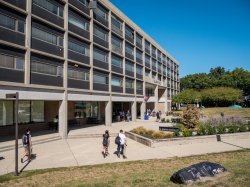Testicular Cancer
Written by Susan Graziano, APN
Posted in: Health Tips, Prevention, Sexual Health

Testicular cancer occurs in the testicles which are located inside the scrotum situated under the penis and is the most common cancer in American males between the ages of 15 and 35. The good news is, testicular cancer is highly treatable when caught early. Symptoms of testicular cancer include a lump or enlargement in either testicle, a feeling of heaviness in the scrotum, a dull ache in abdomen or groin, a sudden collection of fluid in the scrotum, pain or discomfort in a testicle or the scrotum, enlargement or tenderness of the breasts, back pain.
Risk Factors
Risk factors include:
- An undescended testicle
- Abnormal testicle development
- Family history
- Age (young men)
- It is more common in white males
Prevention
There is no way to prevent testicular cancer. The University Health Center recommends testicular self-exams monthly to identify testicular cancer at its earliest stage. The best time to do testicular self-exam is after a warm shower or bath. Roll each testicle between the thumbs and fingers of both hands. A normal testicle is firm, smooth, egg-shaped and about 1.5 inches long. One testicle may be a little larger or hang lower in the scrotum which is normal.
Abnormalities
What is not normal?
- Feeling a lump or hard area in the testicle
- If the whole testicle feels harder than usual
- If one side of your scrotum is very swollen.
These could be signs of cancer, even if there is no pain.
What If I Find Something?
If you find something that is not normal, make an appointment to see a health care provider to be checked. Don’t wait – men have saved their own lives with self-examination.
The University Health Center has brochures and information on testicular self-exam in the waiting room.
